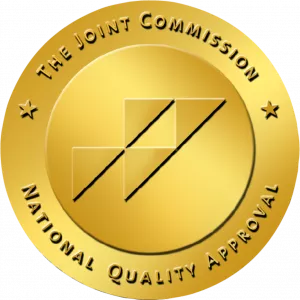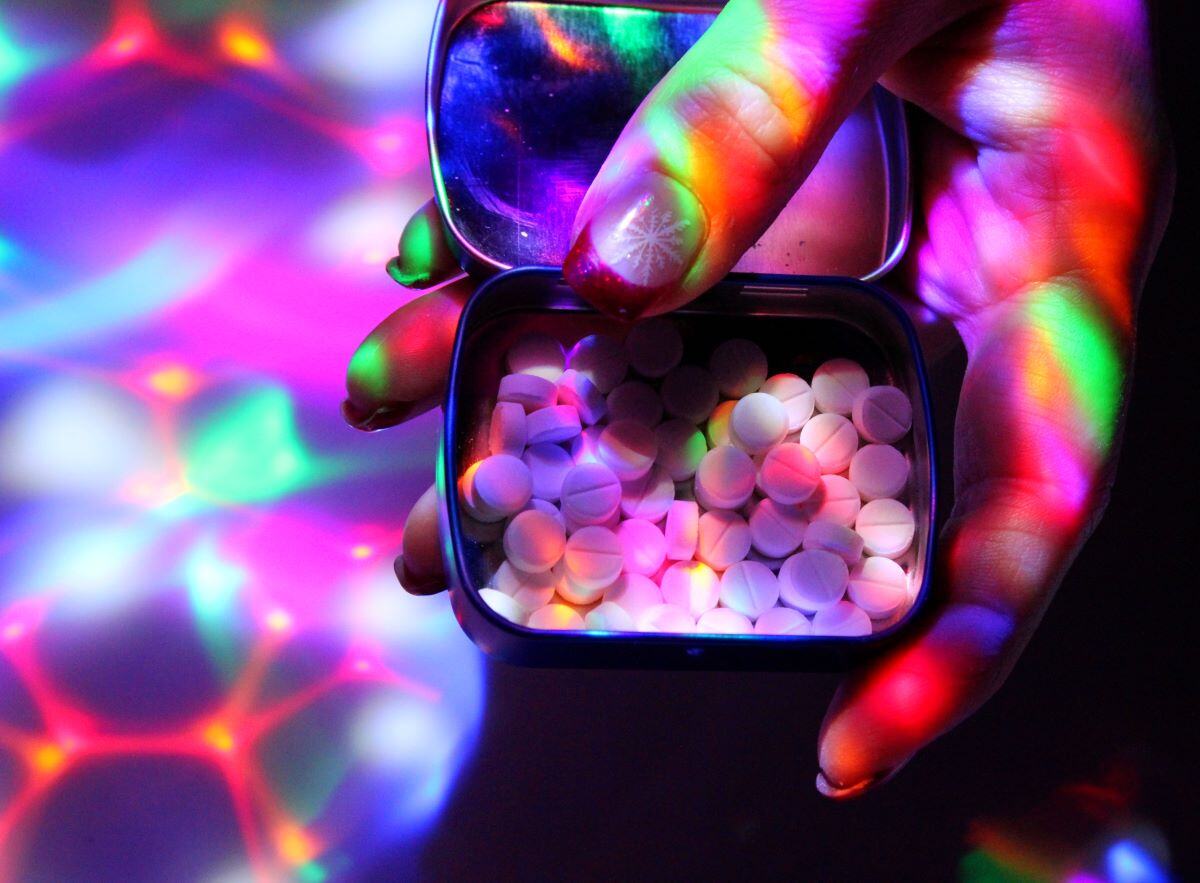The club drugs definition is drugs that are used in social settings like nightclubs, bars, concerts, raves, and parties. Club drugs are used to enhance social experiences and alter perceptions. These drugs can make users feel more energetic, euphoric, and connected to others, which is why they are popular in these environments.
Some of the most well-known club drugs include:
- MDMA (also known as Ecstasy or Molly)
- GHB
- Ketamine
- LSD
Risks Of Using Club Drugs
While these drugs at parties are appealing for their ability to elevate social interactions and intensify pleasant emotions and sensations, they also come with risks. The effects of club drugs can be highly unpredictable, varying greatly from person to person. Factors such as the user's physical and mental state, the environment, and the specific drug and its purity can all influence the experience. This unpredictability can lead to unexpected and potentially dangerous outcomes.
Moreover, the use of club drugs can result in serious health issues. These substances can affect judgment, coordination, and perception, increasing the risk of accidents and injuries. They can also lead to dehydration, overheating, and serious heart problems, especially when combined with physical activity in hot, crowded settings. Understanding the nature and dangers of club drugs is crucial for making informed decisions about their use and for promoting safety in social environments.
If you or a loved one is addicted to club drugs, reach out to us at Avenues Recovery so we can guide you on your road to recovery.
Who Uses Party Drugs?
Some of the most common groups who use pills for parties are:
Young Adults and Teenagers: Many party drug users are in their late teens to mid-20s. This age group often experiments with different substances to enhance their social activities.
Club and Rave Attendees: People who go to nightclubs, music festivals, and rave parties are more likely to use club drugs.
College Students: Some college students use club drugs for fun during parties and social gatherings.
LGBTQ+ Community: Studies have shown higher rates of club drug use within the LGBTQ+ community, particularly at events like circuit parties.
People Who Seek Enhanced Social Experiences: People looking to enhance their social experiences, increase energy levels, or alter their perceptions may turn to club drugs.
Where Do Club Drugs Come From?
Club drugs, also known as party drugs, can come from various sources, including secret labs, pharmaceutical diversion (taken from pharmacies legally and then distributed illegally), and illegal imports.
Here's a breakdown of their origins:
Secret labs: Many club drugs, such as Ecstasy, methamphetamine, and GHB, are produced in illegal laboratories. These labs can range from small-scale operations to large, sophisticated setups. The production process often involves using chemicals that are legally restricted or controlled.
Drug Misuse: Some club drugs, such as ketamine and prescription medications like benzodiazepines, come from legitimate pharmaceutical sources but are used for recreational use. This can happen through stealing, fake prescriptions, or illegal sales by individuals with access to these medications.
Illegal Imports: Many club drugs are manufactured abroad and smuggled into countries through various illegal channels. For example, significant amounts of MDMA are produced in Europe, particularly in countries like the Netherlands and Belgium, and then trafficked to other regions.
Chemical Suppliers: Some chemicals used in the production of club drugs are obtained from chemical suppliers. While these chemicals might have legitimate industrial or research uses, they can be sold to illegal drug manufacturers.
Internet and Dark Web: The rise of the Internet and dark web marketplaces has made it easier to sell and distribute club drugs. Users and dealers can anonymously purchase drugs online, often using cryptocurrencies to make transactions difficult to trace.
The production and distribution of club drugs are highly illegal and pose significant risks to public health and safety. Law enforcement agencies worldwide work to combat the illegal drug trade, but the demand for these substances and the adaptability of those involved in their production and distribution make this an ongoing challenge.
Common Club Drug Examples and Their Side Effects:
The chart below gives a thorough description of many common drugs at raves, along with their side effects:
|
Drug |
Description |
Side Effects |
|
MDMA (Ecstasy,Molly) |
Synthetic drug which alters mood and perception; increases energy, pleasure, emotional warmth, and distorts senses. |
Increased heart rate, hyperthermia, dehydration, anxiety, memory impairment, nausea, and jaw clenching. |
|
Ketamine |
Dissociative (out-of-body) anesthetic with hallucinogenic and dissociative effects; used medically and recreationally. |
Disorientation, hallucinations, nausea, increased heart rate, impaired motor function, “out of body experience.” |
|
GHB |
Central nervous system depressant known for euphoric and sedative effects; also a "date rape" drug. |
Drowsiness, nausea, unconsciousness, seizures, respiratory depression, memory loss, overdose risk. |
|
LSD |
Potent hallucinogen altering thoughts, feelings, and awareness; popular for profound perceptual effects. |
Hallucinations, altered perception, paranoia, mood swings, dizziness, long-term psychological effects. |
|
Cocaine |
Powerful stimulant increasing dopamine levels, leading to intense euphoria; popular in club scenes. |
Increased heart rate, euphoria followed by depression, paranoia, nasal damage, addiction risk. |
|
Meth |
Highly addictive stimulant affecting the central nervous system, known for strong euphoria and increased energy. |
Increased heart rate, hyperactivity, anxiety, paranoia, aggressive behavior, dental issues, overdose risk. |
|
Rohypnol |
Benzodiazepine not legally available in the U.S., known as a "date rape" drug due to its incapacitating effects. |
Drowsiness, confusion, dizziness, amnesia, decreased blood pressure, respiratory depression, overdose risk. |
|
Laughing Gas |
Colorless gas used medically for anesthesia and pain relief, but abused for euphoric and dissociative (out-of-body) effects. |
Dizziness, euphoria, nausea, loss of motor control, temporary unconsciousness, neurological damage risk. |
What are Rave Drug Dangers?
The most common dangers associated with club drugs at raves include a range of physical and psychological effects that can have serious consequences. Drugs like MDMA (ecstasy), GHB, ketamine, and methamphetamine are popular in nightlife settings but pose significant risks.
MDMA can lead to:
- Dehydration
- Hyperthermia
- Serotonin syndrome which can be deadly
GHB, often used as a "date rape" drug, can cause:
- Unconsciousness
- Breathing problems
- Death (especially when mixed with alcohol)
Ketamine can induce intense hallucinations and dissociative states, leading to accidents or injuries.
Methamphetamine (meth) is highly addictive and can cause:
- Physical deterioration
- Mental health issues
- Violent behavior
The purity and composition of club drugs are often unknown, increasing the risk of accidental overdose and the ingestion of harmful substances. Long-term use can result in lasting cognitive and emotional impairments, addiction, and social consequences.
Signs and Symptoms of Club Drug Addiction:
Below are some signs and symptoms of club drug addiction.
Behavioral signs may include:
- Increased secrecy or changes in social circles
- Frequent attendance at parties or clubs where drugs are used
- Neglecting responsibilities at work, school, or home
- Financial problems due to spending money on drugs
- Legal issues related to drug use
Physical and psychological symptoms might involve:
- Noticeable changes in appearance or personal hygiene
- Weight loss or gain
- Insomnia or irregular sleep patterns
- Increased tolerance, requiring more of the drug to achieve the same effect
- Withdrawal symptoms when not using the drug, such as anxiety, depression, or agitation
- Mood swings, irritability, or aggression
- Memory problems, confusion, or impaired judgment
- Persistent cravings and inability to stop using the drug despite negative consequences
Awareness of these signs can help in identifying and addressing club drug addiction early.
Treatment for Club Drug Addiction
Treating addiction to club drugs like MDMA, ketamine, and GHB involves a multi-faceted approach that addresses both the physical and psychological aspects of dependence. The first step is often detoxification, which should be carried out under medical supervision in a safe facility like Avenues Recovery to safely manage withdrawal symptoms.
Following detox, behavioral therapies play a crucial role in recovery. Cognitive-Behavioral Therapy (CBT) helps individuals identify and change the thought patterns that contribute to their drug use, while Motivational Interviewing (MI) encourages commitment to sobriety. Additionally, group therapy provides a supportive environment where individuals can share their experiences and receive encouragement from others facing similar challenges. For some, contingency management programs, which offer rewards for maintaining sobriety, can also be effective. Overall, a combination of these therapies, tailored to the individual’s needs, is essential for a successful recovery from club drug addiction.
Club Drugs Addiction Treatment at Avenues Recovery
If you or a loved one suffers from club drug addiction, reach out to our professionals at Avenues Recovery so we can guide you on your road to recovery. Our expert staff have helped over 30,000 people overcome their addictions, and can help you too. We use personalized treatment plans and a wide range of therapies for a highly individualized rehab experience, where recovery is tailored around you. Contact us today to join our vibrant recovery community and to take your first step towards the addiction-free future you deserve.



